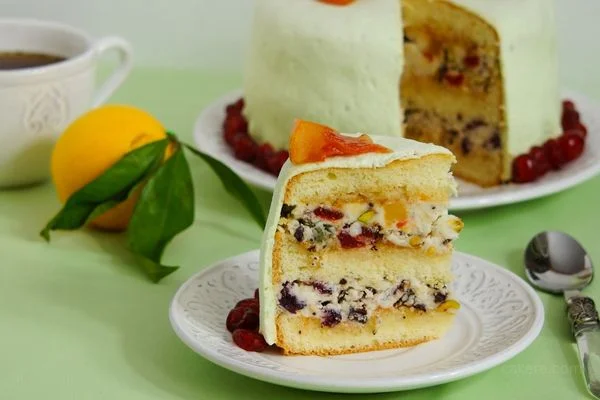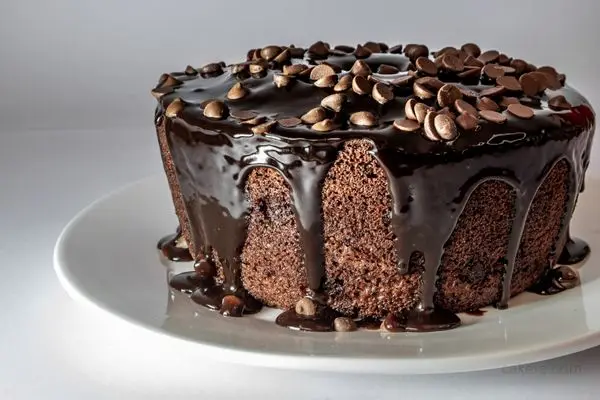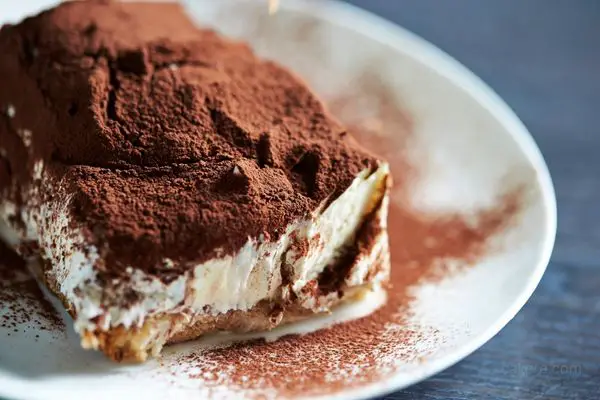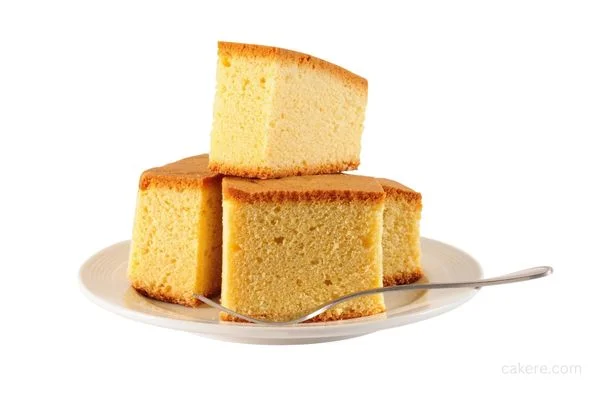Cassata cake, also known as “Cassata Siciliana,” is a traditional Italian dessert hailing from the beautiful island of Sicily. This delectable cake is a masterpiece of flavors and textures, combining moist sponge cake, sweet ricotta cheese, candied fruits, and a hint of liqueur.

Origins of Cassata Cake
The history of Cassata cake can be traced back to Arab influence in Sicily during the Middle Ages.
The Arabs introduced various ingredients and culinary techniques to the region, including the use of ricotta cheese, almonds, and citrus fruits. These influences laid the foundation for the creation of Cassata cake as we know it today.
Traditional Ingredients
The traditional Cassata cake recipe consists of several key ingredients. The sponge cake forms the base, providing a light and airy texture. Ricotta cheese, sweetened with sugar, is the star of the filling, giving the cake its luscious and creamy center.
Candied fruits, such as citrus peels, cherries, and figs, add a burst of color and sweetness. A touch of liqueur, often Marsala wine, is used to enhance the flavors and give the cake a subtle boozy note.
Variations and Regional Differences
As Cassata cake gained popularity across different regions of Italy and around the world, various adaptations and regional variations emerged.
In Palermo, the capital of Sicily, the traditional Cassata cake is adorned with marzipan and elaborate decorations, often in the shape of fruits and flowers. In other regions, chocolate, pistachios, or additional layers of sponge cake may be incorporated, adding unique twists to this beloved dessert.
The Evolution of Cassata Cake
Over the centuries, Cassata cake has evolved and transformed with the changing tastes and influences of different cultures. The original recipe underwent modifications, incorporating new ingredients and techniques.
With the introduction of refrigeration, the cake’s filling evolved to include whipped cream and mascarpone cheese, creating a lighter and more indulgent version of this classic dessert.
Cultural Significance
Cassata cake holds deep cultural significance, particularly in Sicilian cuisine. It is an integral part of festive occasions and celebrations, including weddings, birthdays, and religious festivals.
The cake’s vibrant colors and intricate decorations symbolize joy, abundance, and prosperity. It has become a cherished symbol of Sicilian culinary heritage and a testament to the island’s rich history.
Making Cassata Cake at Home
Creating a homemade Cassata cake can be a delightful and rewarding experience. While it may seem complex, breaking down the process into manageable steps makes it achievable for home bakers.
The key is to start with a moist sponge cake, prepare a creamy ricotta filling, and carefully assemble the layers. The cake should be chilled to allow the flavors to meld together and for easy slicing.
Popular Cassata Cake Recipes
There are countless variations of Cassata cake recipes available, each with its own unique twist. Here are a few popular recipes that you can try at home:
- Classic Sicilian Cassata: This recipe stays true to the traditional flavors and presentation of Cassata cake, incorporating ricotta cheese, candied fruits, and marzipan icing.
- Chocolate Cassata Cake: For chocolate lovers, this variation adds layers of chocolate sponge cake and a rich chocolate ganache filling alongside the traditional ricotta mixture.
- Lemon Cassata Cake: This refreshing twist infuses the ricotta filling with tangy lemon zest and juice, creating a bright and citrusy flavor profile.
- Pistachio Cassata Cake: A delightful variation that incorporates ground pistachios into the ricotta filling, adding a delightful nuttiness and vibrant green color.
- Vegan Cassata Cake: For those following a plant-based diet, this recipe replaces dairy ingredients with alternatives such as cashew cream or tofu-based ricotta, ensuring everyone can enjoy this Italian delicacy.
Cassata Cake and Special Occasions
Cassata cake holds a special place in celebratory events, particularly in Sicilian culture. It is often served at weddings, birthdays, and religious festivals, signifying joy and abundance.
The cake’s elaborate decorations and vibrant colors make it a centerpiece on dessert tables, captivating guests with its visual appeal.
When serving Cassata cake for a special occasion, it is customary to make a grand presentation. Consider adorning the cake with fresh flowers, edible gold leaf, or additional decorative elements that reflect the theme of the celebration.
This attention to detail enhances the overall experience and creates a memorable moment for everyone involved.
Cassata Cake Around the World
Although Cassata cake has its origins in Italy, its popularity has spread far beyond its borders. It can now be found in various countries around the world, each with its own interpretation and adaptations.
In countries such as the United States, Australia, and the United Kingdom, you can find specialty bakeries and dessert shops that offer their unique take on this delectable dessert.
Famous Bakeries and Dessert Shops
When it comes to indulging in a delicious Cassata cake, certain bakeries and dessert shops have gained a reputation for their exceptional creations.
These establishments have honed their craft and perfected the art of making this delectable dessert. Here are a few renowned places where you can savor an exquisite Cassata cake:
- Pasticceria Cappello (Palermo, Sicily): This historic pastry shop in Palermo is famous for its traditional Cassata Siciliana. Their cakes are masterpieces, meticulously decorated with marzipan and showcasing the authentic flavors of Sicilian cuisine.
- Carlo’s Bakery (Hoboken, New Jersey): Known for being featured on the television show “Cake Boss,” Carlo’s Bakery offers a modern twist on Cassata cake. Their creative variations and attention to detail have made them a sought-after destination for cake enthusiasts.
- Pasticceria Massari (Bologna, Italy): This renowned Italian pastry shop is known for its innovative take on Cassata cake. Their modern interpretations incorporate unexpected flavor combinations and stunning contemporary designs.
- Pasticceria Santo Stefano (Milan, Italy): Located in the fashion capital of Italy, Pasticceria Santo Stefano is celebrated for its luxurious and elegant Cassata cakes. They use high-quality ingredients and meticulous craftsmanship to create stunning works of edible art.
- Maria’s Pastry Shop (Boston, Massachusetts): A beloved establishment in Boston’s North End, Maria’s Pastry Shop offers a taste of Sicily with their authentic Cassata cakes. Their commitment to traditional recipes and flavors has made them a local favorite.
Cassata Cake vs. Other Similar Desserts
Cassata cake shares similarities with other desserts around the world, each offering its own unique characteristics. Here are a few desserts that are often compared to Cassata cake:
- Tiramisu: While both Tiramisu and Cassata cake are Italian desserts, they differ significantly in their ingredients and preparation. Tiramisu features layers of coffee-soaked ladyfingers and a mascarpone cream filling, resulting in a rich and creamy dessert.
- Black Forest Cake: Originating from Germany, Black Forest Cake consists of layers of chocolate cake, cherries, and whipped cream. Unlike Cassata cake, it does not contain ricotta cheese or candied fruits.
- Trifle: A popular English dessert, Trifle consists of layers of sponge cake, custard, fruit, and whipped cream. It can be customized with various flavors and ingredients, making it a versatile dessert option.
While these desserts may share certain elements or techniques, Cassata cake stands out with its distinctive combination of flavors and unique cultural significance.
Nutritional Information and Health Considerations
When indulging in Cassata cake or any dessert, it is important to consider nutritional information and exercise moderation. Cassata cake, with its ricotta cheese, sugar, and candied fruits, is a rich and indulgent treat. Here are some nutritional considerations:
- Calories: A slice of Cassata cake typically ranges from 300 to 500 calories, depending on the size and ingredients used.
- Fat and Sugar: Cassata cake is higher in fat and sugar content due to the presence of ricotta cheese and sweetened fillings. It is advisable to enjoy it as an occasional treat rather than a daily indulgence.
- Portion Size: Opt for smaller portions to savor the flavors without overindulging. Sharing a slice with a friend or loved one can also be a great way to enjoy this dessert while keeping portions in check.
Tips for Serving and Storage
To fully enjoy the flavors and textures of Cassata cake, here are some helpful tips for serving and storage:
- Serving Temperature: Cassata cake is traditionally served chilled. Allow the cake to sit at room temperature for a few minutes before serving to slightly soften the filling and enhance the flavors.
- Garnish and Presentation: Enhance the visual appeal of the cake by garnishing it with fresh berries, mint leaves, or a dusting of powdered sugar. This adds a pop of color and adds an extra touch of elegance.
- Storage: Due to its perishable ingredients, it is best to store Cassata cake in the refrigerator. Cover it tightly with plastic wrap or place it in an airtight container to prevent it from drying out.
- Shelf Life: Cassata cake can typically be stored in the refrigerator for up to 3-4 days. However, for optimal taste and freshness, it is recommended to consume it within 1-2 days.
- Freezing: If you have leftover Cassata cake or want to prepare it in advance, you can freeze it. Wrap individual slices tightly in plastic wrap and place them in a freezer-safe container. Thaw them in the refrigerator before serving.
Remember, Cassata cake is at its best when enjoyed fresh. The flavors and textures may slightly change after prolonged storage or freezing, but it can still be a delightful treat.
FAQs
Traditional Cassata cake contains regular flour in the sponge cake, which is not gluten-free. However, there are gluten-free variations available that use alternative flours like almond flour or gluten-free cake mixes.
Yes, if you prefer to omit alcohol, you can replace Marsala wine with non-alcoholic alternatives such as grape juice or fruit syrups. The cake will still be delicious without the alcoholic component.
While ricotta cheese is a key ingredient in Cassata cake, you can experiment with alternatives like mascarpone cheese or a dairy-free ricotta substitute for lactose-intolerant or vegan versions.
The time required to make Cassata cake varies depending on the recipe and skill level. It typically takes a few hours, including baking the sponge cake, preparing the filling, assembling the layers, and allowing it to chill and set.
Absolutely! Cassata cake allows for creativity and personalization. You can experiment with different designs, colors, and decorative elements to make it uniquely yours. Edible flowers, chocolate decorations, or personalized messages can add a special touch to your Cassata cake creation.
Conclusion
The history of Cassata cake is a journey through time, blending cultural influences and culinary traditions. From its Arab origins in Sicily to its worldwide popularity today, this Italian dessert has captured the hearts and taste buds of dessert enthusiasts around the globe.



